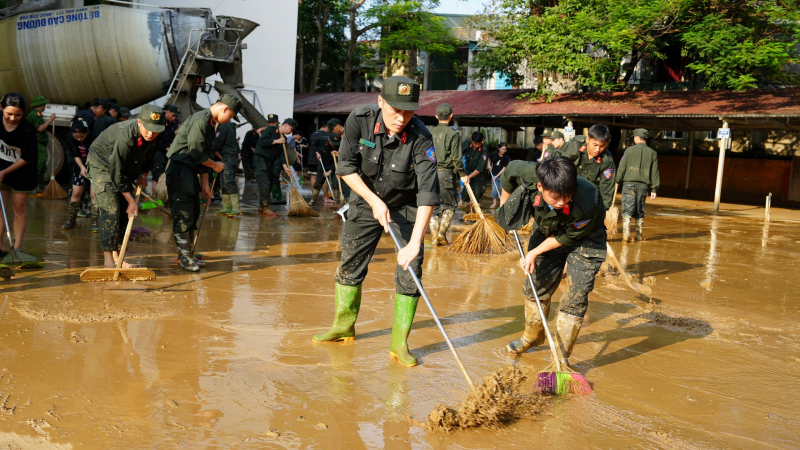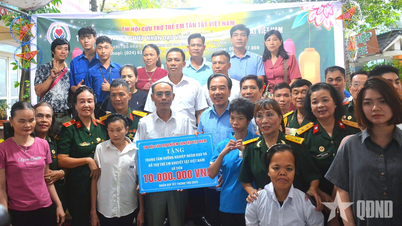Mr. Hoang Duc Cuong, Deputy Director of the Department of Hydrometeorology, said that over the past 9 months, natural disasters in Vietnam have been more complex, unusual and more extreme than the average of many years. This year's storm season in particular has recorded rare extreme numbers in terms of intensity, frequency and scope of influence.
"In just the first nine months of the year, the East Sea saw 14 storms and tropical depressions, much higher than the average of many years. Of these, six storms directly and indirectly affected our country, creating a series of natural disasters, with almost no break long enough to overcome the consequences," said Mr. Cuong.
The abnormality of the year's storm season appeared right from June when storm No. 1 (storm Wutip) became the first storm to appear earliest in the East Sea in more than 40 years. Although it did not make landfall in our country, the storm's circulation caused record rainfall of 250-550mm for an area stretching from South Ha Tinh to Da Nang , in many places exceeding 800mm, leading to historic floods on the rivers of the Central region in the summer.
Then, just over a month later, storms No. 3 and No. 5 made landfall consecutively, causing winds of level 10-11, gusts of level 12, rain of 200-400 mm, in some places over 500 mm, causing floods exceeding alert level 3 on the Ca River, Ma River, Hoang Long River and Thao River systems.

Super typhoon No. 9 (super typhoon Ragasa) appeared in the East Sea in late September with the strongest intensity, surpassing super typhoon Yagi in 2024. For the first time in forecasting history, Vietnam determined the storm wind level to reach level 17, gusting above level 17, this is the last level of the storm wind scale that Vietnam is using.
“Super typhoon Ragasa became the strongest typhoon ever recorded in the East Sea. Although it weakened before reaching the shore, it showed the real risk of super typhoons in the context of climate change,” said the Deputy Director of the Department of Hydrometeorology.
Notably, right after storm No. 9, storm No. 10 (Bualoi) made landfall directly in Ha Tinh and Northern Quang Tri with wind intensity of level 10-12, gusting to level 14, causing 300-600mm of rain over a wide area, causing flooding, landslides, and flash floods from the North to the Central region.
According to Mr. Cuong, this is a storm with many unusual and extreme points when moving very fast, averaging up to 30-35km/h (twice as fast as normal storms). The time the storm stayed on land in Nghe An-North Quang Tri lasted more than 12 hours, a rare long time for a storm, increasing the destructive power of this storm on our mainland.
Notably, despite being hundreds of kilometers away from the storm's center, from dawn to noon on September 29, several northern provinces recorded tornadoes and waterspouts causing great damage to people and property.

Within just one month, storm No. 5 and storm No. 10 caused two serious and very serious natural disaster combinations, fierce and almost simultaneously occurring especially dangerous types of natural disasters including strong and very strong storms, large and especially large floods, flash floods, landslides, and widespread flooding.
“These types of natural disasters have had a serious impact on most socio-economic activities and infrastructure from coastal areas to deltas, midlands and mountainous areas, including heavy rains causing severe flooding in Hanoi in late August and late September,” Mr. Cuong said.
The National Center for Hydro-Meteorological Forecasting said that from October to December 2025, storms/tropical depressions operating in the East Sea and affecting our country will continue to be higher than the average of many years with about 4-5 storms operating in the East Sea, half of which may affect our mainland.
In addition, from around October 2025, cold air tends to increase in intensity and frequency, then become more active in November-December 2025. Cold air combined with storms/tropical depressions can cause a complicated flood season in the Central region from the second half of October to the first half of December.
Source: https://cand.com.vn/doi-song/bao-don-dap-khong-co-khoang-nghi-du-dai-de-khac-phuc-hau-qua-i783749/


































































































Comment (0)